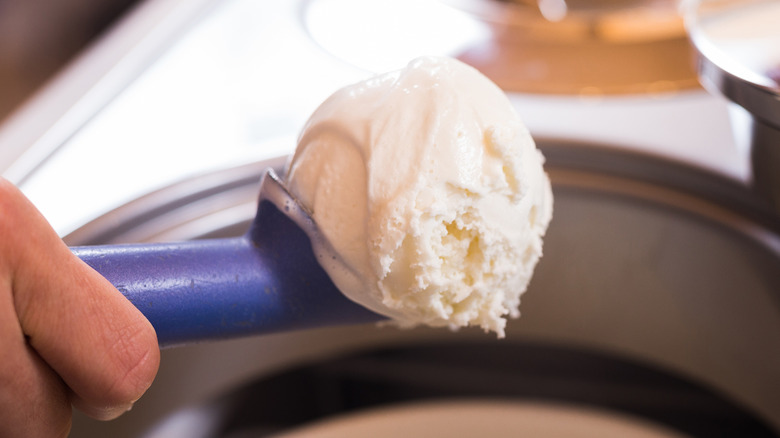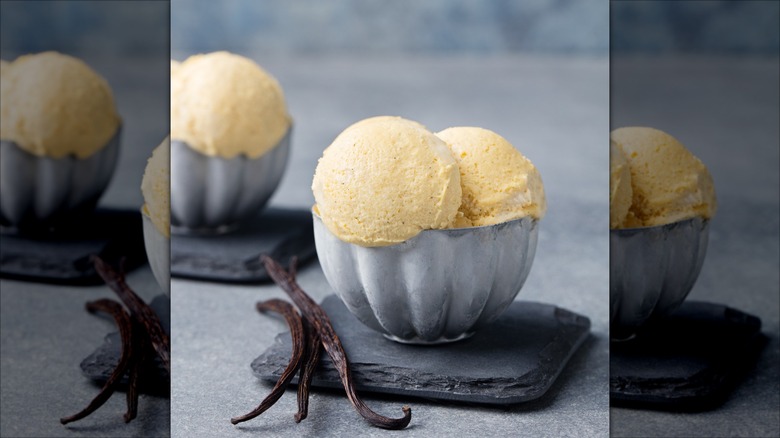The Ingredient That Makes French Vanilla Different From Regular Vanilla
As an ingredient, a concept, and a way of life, vanilla sometimes gets a bad rap. Not only is its name used as a stand-in for what some might call unadventurous adult choices, but anecdotally, it's often the flavor of the only leftover cupcake at your birthday party. Notwithstanding those rare souls with genuinely vanilla-averse tastebuds, the flavor's reputation (in some circles) as a boring fallback is a true shame, because it's actually quite remarkable how vanilla is the ubiquitous flavor it is today.
Back before you could find vanilla ice cream in just about every frozen dessert freezer you came across, vanilla was much more widely acknowledged as the precious commodity it is. According to National Geographic, the vanilla orchid was first discovered in the 15th century by the Totonacs of Mexico. A myth espoused by the Totonacs claimed that the plant was born from the blood of a princess after she was killed for marrying her forbidden mortal lover (via Plant Scientist). When the Aztecs conquered Totonac territory, it was only a matter of time before vanilla made its mark across Europe. Vanilla is now the second most expensive spice in the world, largely due to the arduous hand-pollination process, per NatGeo. So, if vanilla originated in South America, then where does French vanilla come in? Much like the myths about french fries, the flavor isn't from France at all.
Egg yolks are très French
According to MasterClass, the bulk of today's vanilla supply comes from Madagascar, Mexico, Tahiti, and the island of Réunion — not France. Therefore, rather than referring to a specific kind of bean, vanilla ice cream becomes "French" when egg yolks are added to the ice cream base, yielding a light yellow hue and a rich flavor.
French vanilla surely gets its name for its likeness to crème pâtissiere, or custard filling, which allegedly made its first appearance in François Massialot's "The Royal and Bourgeois Cook" in the late 17th century (via BAKERpedia). MasterClass adds that both French vanilla and yolk-free vanilla can be made with either "real" beans or vanilla extract. If you want to impress the proprietor of your local ice cream shop, maybe you can drop your newfangled knowledge about not-so-French vanilla the next time you order a scoop.

